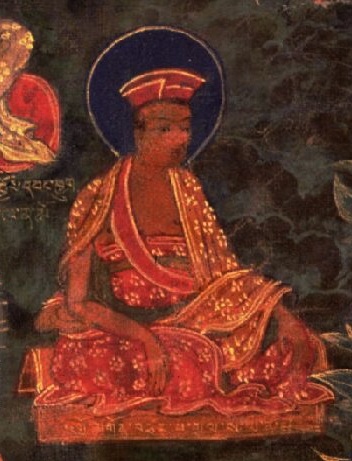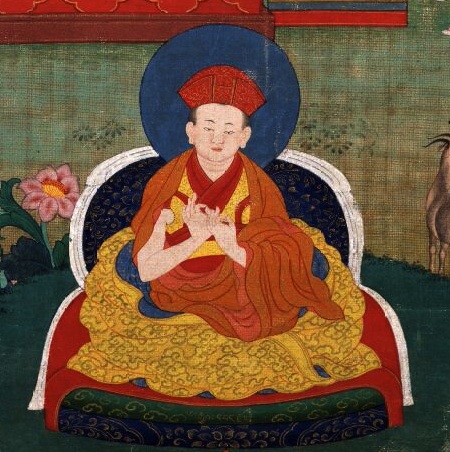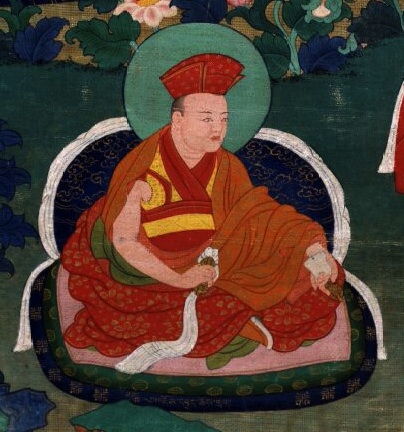The Drukchen incarnation line, also known as the Gyelwang Drukpa, originated in the fifteenth century when the Gya clan that controlled Ralung Monastery identified a boy of the clan, Kunga Peljor, as the reincarnation of the monastery's founder, Tsangpa Gyare Yeshe Dorje, and gave him the title of the Second Drukchen. The Third Drukchen was found outside of the Gya clan, which continued to control Ralung, and henceforth the line was based elsewhere.
Biographies
The First Drukchen, Tsangpa Gyare Yeshe Dorje
b.1161 - d.1211
Tsangpa Gyare Yeshe Dorje is considered the founder of the Drukpa Kagyu tradition, named after the Druk Monastery, one of three monasteries he established, the most famous being Ralung, which he founded in 1180. A member of the Gya clan that would continue to control Ralung until the seventeenth century, he was the most important disciple of Lingrepa, a student of Pakmodrupa. He is counted as the first in the line of Drukchen incarnations, although the second Drukchen would not be born until a few centuries after his death, when the Gya family line ended. As an author Tsangpa Gyare is best known for his spontaneous songs of realization, rich with spiritual advice. He discovered treasure texts written by Tipupa for Rechungpa, The Six Cycles of Equal Taste, still an important teaching of the Drukpa Kagyu today.

The Second Drukchen, Kunga Peljor
b.1428 - d.1476
The Second Drukchen, Kunga Peljor, was the thirteenth abbot of Ralung Monastery. He was the son of Sherab Zangpo who was the twelfth abbot of Ralung. He was identified as the reincarnation of Tsangpa Gyare, the founder of the Drukpa tradition. Kunga Peljor also served as abbot of Daklha Gampo.

The Third Drukchen, Jamyang Chodrak
b.1478 - d.1523
Jamyang Chodrak, the Third Drukchen, was born into the Ja family rather than the Gya clan that had held the lineage of Ralung Monastery since it was founded by Tsangpa Gyare. Because of this he was not permitted to ascend to the throne of Ralung and he established the monastery of Tashi Tongmon in Loro as his seat. In addition to the Drukpa Kagyu teachings, he was particularly involved in the Rechung Nyengyu tradition.

The Fourth Drukchen, Pema Karpo
b.1527 - d.1592

The Fifth Drukchen, Paksam Wangpo
b.1593 - d.1641

The Sixth Drukchen, Mipam Wangpo
b.1641 - d.1717

The Seventh Drukchen, Kargyu Trinle Shingta
b.1718 - d.1766

The Eighth Drukchen, Kunzik Chokyi Nangwa
b.1768 - d.1822

The Ninth Drukchen, Mingyur Wanggyel
b.1823 - d.1883

The Tenth Drukchen, Mipam Chokyi Wangpo
b.1884 - d.1930

The Eleventh Drukchen, Tendzin Khyenrab Gelek Wangpo
b.1931 - d.1960
